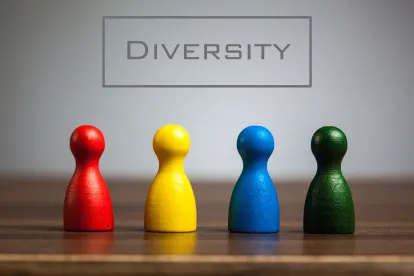City University of New York Scholar and Sociologist Tsedale M. Melaku studies diversity in the legal field, and in a recent Harvard Business Review article she wrote specifically about the social and professional challenges nonwhite lawyers face when they work for traditional law firms. While most white law leaders now appreciate the importance of fostering diversity, their own life experiences may blind them to the specific ways in which conventional law firm culture complicates the path for the lawyers they sincerely want to recruit, retain and support.
Fortunately, Melaku’s interviews with these lawyers illuminate the very concrete problems — and hint at solutions, many of which can be driven, or at least implemented, by marketing and business development teams. Here’s a handful of the challenges these lawyers face:
PR and marketing support automatically follows the rainmakers.
When an attorney lands a game-changing client or nabs a record settlement, the firm promotes the win with a press release, mention in the legal press and maybe even an opportunity for that lawyer to write a column on his practice area. Those are all smart PR moves. But if your marketing and PR “carrots” are distributed just to your firm’s big winners, you may find that every time a picture of one of your lawyers runs in the legal press, it is one of the same handful of white men.
Instead, firms need to imagine a broader purpose for PR: spotlighting attorneys for what makes them unique can be a catalyst for growth and advancement, rather than just a reward that comes after an important deal. Do you have attorneys taking a novel approach to some niche within their practice area? Or who came to their work in the law by an unusual route? What about interesting pro bono work? An active blog, a podcast or other creative use of technology to reach clients? All of these traits represent potential avenues for feature stories, bylined thought leadership articles, conversations with reporters or ideas for conference panels that will give new attorneys a chance to build their individual profiles and the overall brand of the firm.
Serving as the “face” of the firm’s diversity initiatives is (uncompensated) work.
Sadly, diversity is so rare in the leadership class that when firms do manage to advance a lawyer of color, that person is often tasked with representing the firm on panels and at events in addition to serving their clients. While some lawyers may welcome these opportunities, others might prefer to focus on the practice of law. So, even as firms provide additional PR and marketing support for diverse attorneys, firm leaders must recognize that contributing to outreach and diversity initiatives is work — and should be treated as such. Some firms allow attorneys to bill for this time just as they would for client work. Others consider it on performance evaluations when it comes time for raises or bonuses. Find a way to compensate these attorneys for this extra work.
Traditional networking depends on access.
Snagging clients on the golf course, in the country club, or during an ivy league alumni weekend are great business development strategies — for some people. But not all lawyers grew up playing golf, and many elite clubs in this country still have a checkered relationship with diversity, making membership far from routine or even comfortable for lawyers of color. Does your firm celebrate these “chance” encounters with clients at the expense of more formal and inclusive forms of networking?
Support your hires from nontraditional backgrounds by helping them build professional networks that feel authentic to their own experience. This might include support from communications professionals to pitch them for conference panels, nominate them for awards and help them get involved in professional organizations. There is more than one way to network, and lawyers need to know their firm supports their pursuit of new business in ways that honor who they are.
Mentors tend to choose mentees who look like them.
Mentoring has been held up as a key tool for improving retention and advancement. But when senior attorneys think about grooming the lawyers who will someday lead the firm — and inherit their clients — they tend to choose the lawyers who remind them of themselves. Firms are fond of saying that mentoring relationships should come together “naturally,” but for young lawyers who don’t see people like them in leadership positions, this often leads to no mentoring at all.
Firms can take action on this without getting paralyzed by the chicken-and-egg problem (the only way to advance young minority lawyers is to put minority mentors in place, but those lawyers need mentors to get there). Proactive planning to make mentoring part of the work process, and careful matchmaking to connect your firm’s best teachers with the lawyers who can benefit from their experience are good first steps. Not everyone is cut out to be a mentor, and that’s fine. The firm should take responsibility for facilitating these relationships and for evaluating the effectiveness of mentors. Are their mentees advancing in demonstrable ways? Mentorship should involve more than just offering advice; mentors should also be actively sponsoring and promoting their protégés for stretch assignments and leadership opportunities.
Dress codes privilege European standards.
Lawyers of color face both explicit and implicit expectations about how members of the firm should dress and wear their hair. While written dress codes that prohibit, for example, garments worn for religious reasons are obvious violations of equal employment opportunity laws, rules that bar styles worn for cultural or personal reasons may be legal but no less burdensome. In some firms, the written dress code is quite vague, requiring “professional dress,” but the implicit expectations that come along with it are specific and exacting.
The truth is, the notion that conservative business suits for men and women set the standard for professionalism is a white, Western idea. So are norms around hairstyles, facial hair, makeup, jewelry, fingernails, heel height and other aspects of personal expression. Body sizes vary, and not everyone can easily (or affordably) adhere to traditional requirements. Or they may not want to. Dressing authentically is, for many people, an expression of pride in their identities and an opportunity to increase visibility and inclusion, sending a message to younger attorneys on the way up that they, too, belong. If your firm insists on conformity, even when it doesn’t impact job performance, whom might that exclude? And what does your firm miss out on when your lawyers aren’t comfortable bringing their whole selves to work?
Firms that are truly serious about moving the needle on diversity and inclusion understand that the secret is not rearranging the seats at the table, but making that table bigger. In every aspect of work life at the firm — office culture, client engagement, mentoring, promotion and, of course, the practice of law itself — you must establish policies that encourage your attorneys to bring their unique perspectives and insights with them each day. It’s how you will retain and advance the diverse leadership class your clients demand. And it’s the only way you will realize the true benefits that come from different kinds of people solving problems in different ways.




 />i
/>i

